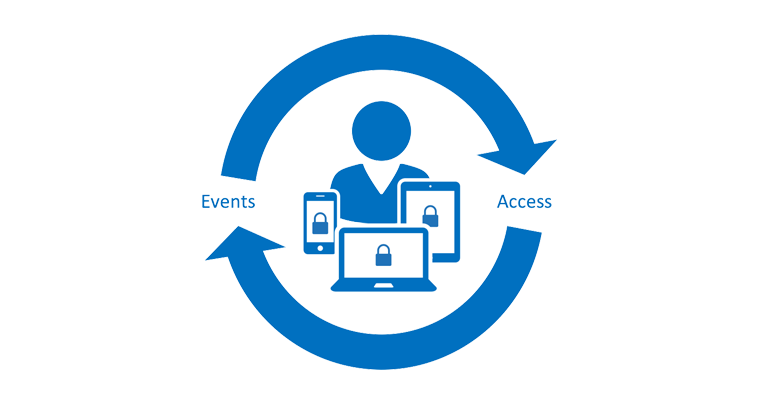Secure access to email and other business productivity tools continues to be a top priority for IT administrators. Microsoft services, such as Azure Active Directory and Office 365, use OpenID Connect for authentication and OAuth 2.0 for authorization. Here’s how that process works: When Outlook connects to Exchange Online, the API requests are authorized using OAuth 2.0 Access Tokens. They are valid for one hour. When the tokens expire, the Outlook client is redirected back to Azure AD to refresh them. This provides an opportunity to re-evaluate policies for user access. If a user has been disabled in the directory or because of a Conditional Access policy, the admin might choose not to refresh the token.
Read MoreTo say the cybersecurity community is a buzz over the recent news of the highly-sophisticated data breaches at many U.S. government agencies this month due to vulnerabilities in the SolarWinds Orion IT management platform is an understatement. Experts believe that Russian government hackers are behind this global espionage which may have started as early as last spring. The threat actors conducted a supply chain attack on SolarWinds Orion Platform with a backdoor through a FireEye software update. The SolarWinds versions impacted are 2019.4 HF 5, 2020.2 with no hotfix installed, and 2020.2 HF 1. Agencies affected include the Pentagon, the Department of Homeland Security and the Department of the Treasury.
Read More
Mimecast held their 2020 Cyber Resilience Summit remotely this year covering a wide range of topics. You can read our previous blog “Mimecast Cyber Resilience Summit 2020 – Key Takeaways” for those highlights. In addition, Mimecast provided some alarming data on the pandemic threat reality that we are facing.
Mimecast collected 100 days of detection data from January 2020 to April 2020. The results below reveal a 36.9% INCREASE in threat detections, where the key focus of threat actors has become high volume Spam and Impersonation. Here’s the breakdown:
Read More
Mimecast held their 2020 Cyber Resilience Summit remotely this year, providing some interesting updates to their suite of cyber security tools. As a leading Email Security Gateway, Mimecast has expanded their portfolio over the last few years into a more robust and comprehensive framework that they have dubbed “Email Security 3.0”.
The Email Security 3.0 Framework can be broken out into three zones of protection:
Zone 1: Perimeter – This is your traditional email delivery path and is saturated with relentless attacks. In order to protect against these threats, Mimecast leverages their advanced Targeted Threat Protection including impersonation protection, attachment sandbox, and URL Protection.
Read MoreOn July 16, 2020, the European Court of Justice (ECJ – the EU’s high court) invalidated the EU-US Privacy Shield Framework as a potential mechanism for meeting the GDPR's cross-border personal data transfer restrictions.
Effective immediately, U.S. companies that process EU “personal data” can no longer rely on registration under the Privacy Shield and must establish an alternative legal basis for any continued EU-US transfers.
Previously, cross-border transfers to the US were permitted under three mechanisms: 1) the Privacy Shield (http://privacyshield.gov), 2) Standard Contractual Clauses (SCC), and 3) Binding Corporate Rules (BCR).
Read MoreConditional Access in Azure AD provides a level of security required to maintain appropriate controls over who can access confidential and privileged information. It was the topic of discussion at our most recent “Ask the Engineer Q&A Roundtable” where attendees learned tips for a successful Conditional Access deployment and got answers to their specific questions.
Read MoreOn February 11 2020, Microsoft released a patch for Exchange Servers that would fix a vulnerability pertaining to unauthorized access to the backend of the Exchange Control Panel. There is now confirmation from a source at the United States Department of Defense that multiple nation-state backed actors and other ransomware gangs are actively and maliciously exploiting this vulnerability on unpatched systems. The vulnerability results from the Exchange Server failing to properly create unique cryptographic keys at the time of installation. The hackers’ sophisticated exploits circumvent encryption, granting them full access of the server.
It is imperative that the latest patches from February 11th be applied as even a single Exchange instance puts you at risk.
Read More
Retailers are under intense competition to deliver personal, seamless and differentiated on-line shopping experiences to ensure customer loyalty and drive growth. And while a retailer’s website must be extremely responsive and meet high user expectations, it must also be highly secure.
A cloud-based web application firewall (WAF) provides e-commerce sites with a level of data protection that eliminates website vulnerabilities, blocking bad actors and harmful traffic without degradation of the site’s performance.
Here are 4 crucial tips for retailers who have implemented a WAF
Read MoreI recently returned from this year’s Cisco Live! in Orlando. It was a busy week jam packed with great speakers, engaging sessions, demos and product announcements. There was so much going on at any given moment it was hard to get to every session of interest. Now that I’m back I’ve had some time to digest all I learned and thought I would share my key product takeaways for network security.
Read MoreDo you have a Small Office Home Office (SOHO) grade router at home? Is it possible you have rogue devices on your corporate network? Does Supervisory Control and Data Acquisition (SCADA) traffic traverse your network? If you answer yes to any of these questions, then this post is a must read!
Read MoreSubscribe to Daymark Insights
Latest Posts
Browse by Tag
- Cloud (70)
- Security (45)
- Microsoft (44)
- Azure (36)
- Partners (32)
- Data Protection (30)
- Data Center (28)
- Backup (25)
- Daymark News (23)
- Compliance (22)
- Storage (20)
- Data Governance (19)
- Veritas (18)
- Virtualization (18)
- CMMC (16)
- Cybersecurity (15)
- Disaster Recovery (14)
- Cloud Backup (13)
- Managed Services (13)
- Government Cloud (12)
- Featured Gov (9)
- GCC High (9)
- Industry Expertise (9)
- AI (8)
- Networking (6)
- Hybrid Cloud (5)
- NIST SP 800-171 (3)
- Reporting (3)
- Services (3)
- Cloud Security (2)
- Copilot for Microsoft 365 (2)
- GDPR (2)
- Pure Storage (2)
- Mobile (1)
- Reporting-as-a-Service (1)













